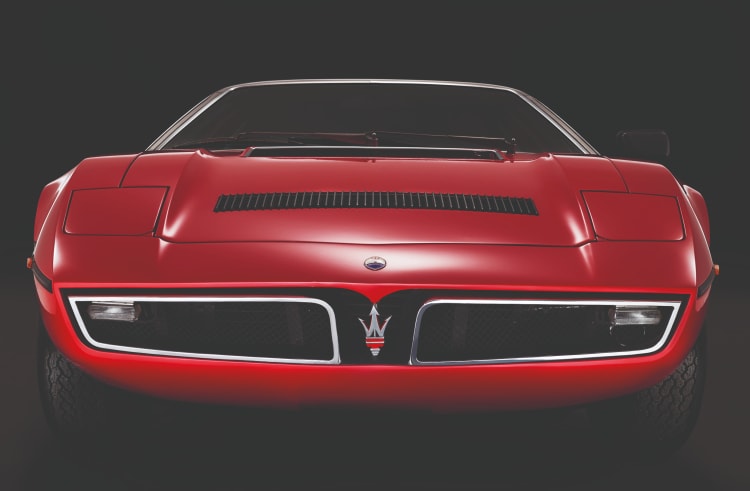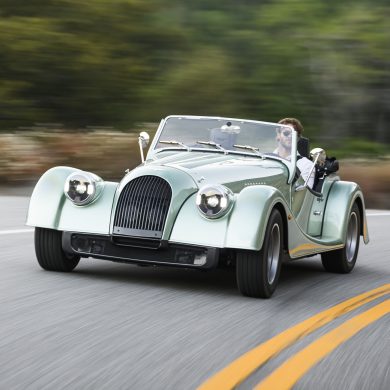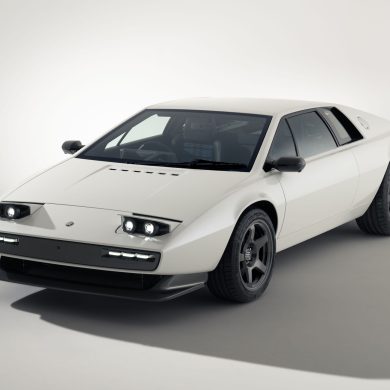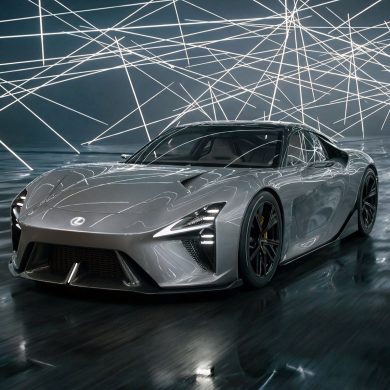Maserati is celebrating 50 years of the Bora, their first mid-mounted rear engine road car with four-wheel independent suspension, which was built between 1971 to 1978.
On March 11, 1971, the Maserati Bora made its debut at the Geneva International Motor Show. From then until 1978, Maserati constructed 564 units in total – 289 fitted with 4.7L engines and 275 constructed with 4.9L engines.
[ngg src=”galleries” ids=”955″ display=”basic_imagebrowser”]
Seeing the trend taking over Formula 1 racing cars, Maserati approached Giorgetto Giugiaro from Italdesign to create a mid-mounted rear-engine sports car with improved safety, comfort, design, and performance.
The car was equipped in 1971 with a reliable 4,700cc V8 engine that can produce 310 horsepower at 6,000 rpm. Two years later, it would be joined by the 4,900cc engine.
The engine was mounted lengthwise on a subframe that was installed on the monocoque.

Features that set the car apart included the aerodynamic retractable headlights to prevent aerodynamic drag, projecting differential on the rear axle, disc brakes, dry-mounted single disc clutch, telescopic suspension dampers, 5-speed gearbox, and for the first time, Maserati used independent suspensions on all wheels.
The Bora perfectly balanced comfort and performance with a top speed of more than 280kph achievable. At the same time it provided great driving pleasure with its quiet interior and swift engine response.
[ngg src=”galleries” ids=”956″ sortorder=”148653,148650,148649,148651,148652,148654″ display=”basic_imagebrowser” order_by=”sortorder”]
The car’s engineering design was spearheaded by Giulio Alfieri, while the style and aerodynamic design were of Giorgetto Giugiaro.
The creation was a two-seater coupé using simple yet elegant lines, giving the overall balanced appearance of the Maserati Bora.
The vehicle’s front was a low, graceful, almost tapered that was designed to cut through the air with the front grille having two rectangular air vents with the iconic Trident in the center.

The flawlessly sleek sides were midway separated by a thin black rubber trim, while at the rear displayed a Kamm or truncated tail.

This final product resulted in a streamlined, innovative, and trendsetting car that fitted perfectly with the rock-and-roll spirit of the 70s and continues to delight and excite fans today.
[Source: Maserati]











I brought one back in ’72–it was a r&t cover car. 18mpg cruising at a steady 70. I discovered it ran on the idle circuit to over 60mph. if your exotic of this vintage fouls a plug or 2 in normal driving, try screwing in the idle screw 1/8 of a turn after swapping the dirty plug with a clean one from another hole. shutting the door sounded like shutting the door on a Boeing 727.